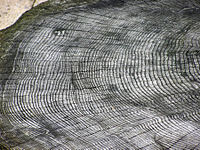
Photo from wikipedia
Aims Radial growth in response to climate has been reported in many trees, but the sex-specific responses of tree-ring growth associated with altitude in dioecious trees are still poorly known.… Click to show full abstract
Aims Radial growth in response to climate has been reported in many trees, but the sex-specific responses of tree-ring growth associated with altitude in dioecious trees are still poorly known. This study aims to examine whether (i) there are sex-related responses of treering growth to climate in dioecious trees; (ii) these responses could be changed with altitude elevation. Methods The tree-ring width and basal area increment (BAI) were measured over the past 30 years (1982–2011), and the sexual differences in relationship between BAI and time span and correlations between ring width and climatic factors were investigated in Populus cathayana trees at two altitude sites (1,450 m and 1,750 m a.s.l.) in Xiaowutai Mountain, Hebei, north China. Important Findings The BAI was increased over the past 30 years. Trees at high-altitude sites had significantly lower mean ring width and mean BAI than those trees at low-altitude sites (P < 0.001). In addition, sexual differences in tree-ring growth and its response to climate were more pronounced by altitude elevation. Male trees had a significantly larger mean ring width and mean BAI than did females at high-altitude sites, whereas no significant sexual differences in these traits were detected at low-altitude sites. Female trees were sensitive to previous October–November temperatures at high altitude but to current February and April precipitation at low altitude (P < 0.05), whereas male trees were sensitive to current June temperature at high altitude but to January precipitation at low altitude (P < 0.05). Our results indicated that the responses of tree-ring growth to climate are sex dependent and can be changed with altitude elevation.
Journal Title: Journal of Plant Ecology
Year Published: 2018
Link to full text (if available)
Share on Social Media: Sign Up to like & get
recommendations!